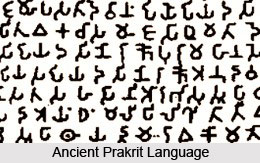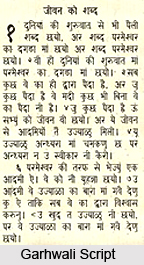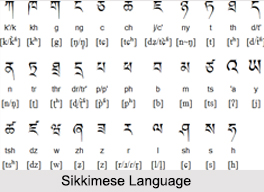About Maithili Language
 Due to it`s belonging to the famous language family of Indo Aryan language, Maithili has a long association with all the people residing in East India. In fact numerous speakers can be found in Bihar, Delhi, Orissa, Madhya Pradesh, Maharashtra, West Bengal. In North Indian states also namely Delhi, Madhya pradesh, popularity of this Maithili language is no less significant.
Due to it`s belonging to the famous language family of Indo Aryan language, Maithili has a long association with all the people residing in East India. In fact numerous speakers can be found in Bihar, Delhi, Orissa, Madhya Pradesh, Maharashtra, West Bengal. In North Indian states also namely Delhi, Madhya pradesh, popularity of this Maithili language is no less significant.
Because of its close association with eastern region of India, expert linguists have considered it to be a part of Eastern zone group of the famous Indo Aryan family and thus segregated it from Hindi, which belongs to Central zone of the same family. Some scholars still claim Maithili to be a dialect of both Bengali and Hindi languages.
Even as per a census report, it has been classified as a source of origination of The famous Hindi language. The turning point came when in the year 2003, Maithili gained the status of an independent language through its incorporation in the `Eighth Schedule of the Indian Constitution`. In the year 2003, it was declared as the official language. This historic step was taken so that it can be widely used in the spheres of academics, governance and all other official activities.
Maithili has a quite huge Maithili-speaking community which has been estimated as 22,000,000 in India and also 24,797,582 in the whole world.
Mailhi language has a rich history behind it. Etymologically, The term, Maithili has been derived from the word Mithila, which denotes a famous state in primitive period in Indian subcontinent. Maithili is also one of the names of Sita, the spouse of Lord Rama.
The literature of Maithili is quite embellished . The most well known literaute of Maithili language is Vidyapati, the famous poet of ancient India. It is mainly due to his initiative that Maithili has raised to its erudite status just from its humble origin.
His wonderful poems had influenced the then the Maharaja of Darbhanga to bestow upon the status of official language and Sanskrit, which was beyond comprehension to the masses.
As far as its writing is concerned, Maithili was usually written in the Maithili script, better known as Tirhuta and Mithilakshar , with some similarity with the Bengali script. It was also written in the Kaithi script. Today, Devanagari script is most frequently used for Maithili language. Much effort is implemented to conserve the Maithili script. Digitalized version is also underway to encode the script in the standard Unicode and for implementing this; a proposal also has been put forward for the allocation of the `Unicode Roadmap`.
For Maithali language, few alternative names have been suggested. These are namely Apabhramsa ,Maitli, Maitili, Methli, Tirahutia, Bihari, Tirhuti, Tirhutia.
Multitudes of dialects that Maithili language has, truly makes it illustrious. What is even more remarkable is that diversification in dialects have occurred not only due to its geographical location. Also caste differences have created much influence in making the dialects so varied, yet quite robust.
Standard Maithili, Southern Standard Maithili, Eastern Maithili (Khotta, Kortha, Kortha Bihari), Western Maithili, Jolaha, Central Colloquial Maithili (Sotipura), Kisan, Dehati are names of the dialects that are worth to note. Another distinctive characteristic of these Maithili dialects is its easy comprehensibility among its people. The reason is the prevalence of several similar words in almost all the dialects. Almost ninety percent of words are shared between both `Brahmin and non-Brahmin dialects`
In the initial years Maithili language has earned the status of being the erudite language widely spoken by the people of high castes. Today, however, a Maithili Academy also has grown to impart training to the people irrespective of the classes. Now, Maithili finds its speakers amongst all the castes and classes. Usage of the Maithili language in the households, village grounds and also towns, city halls is a common phenomenon.
Truly Maithili is a language of the masses. Malithili magazines, newspapers and even television programs also have proliferated. Maithili has gained popularity so much so that it is incorporated in the academic curriculum of universities and colleges also. Knowledge of maithili linguistics and literature are being taught at the Patna University and also L. N. Mithila University in Darbhanga. Very recently, dictionary and grammar books were introduced for school also.
History of Maithili Language
 History of Maithili Language reveals that it is one of the Indo-Aryan languages. According to linguists Maithili is considered as an Eastern Indic language thereby making it different from Hindi. It is believed that Maithili was a corrupt form of Hindi until the Maithili grammar appeared in 1880-81. This language is derived from Avahattha, the Maithil Apabhramsha, which is derived from Magadhi Apbhramsha. Maithili was traditionally written in the Maithili and Kaithi script.
History of Maithili Language reveals that it is one of the Indo-Aryan languages. According to linguists Maithili is considered as an Eastern Indic language thereby making it different from Hindi. It is believed that Maithili was a corrupt form of Hindi until the Maithili grammar appeared in 1880-81. This language is derived from Avahattha, the Maithil Apabhramsha, which is derived from Magadhi Apbhramsha. Maithili was traditionally written in the Maithili and Kaithi script.
The word Maithili is derived from the word Mithila that was an ancient kingdom of King Janaka. Maithili was considered as the language of the common folk. The earliest work in Maithili language was the Varna Ratnakar by Jyotirishwar Thakur dated about 1324. Jyotirisvara Thakur composed Varnaratnakara in pure Maithili language. It is considered as the earliest prose in any Indian language. The various dialects of Maithili are standard Maithili, southern standard Maithili, eastern Maithili, Western Maithili, Jolaha and Central Colloquial Maithili.
Vidyapati Thakur (1360 to 1450) was an epoch making poet who came up under the patronage of the like-minded king Shiva Simha and his queen Lakhi Ma Devi. He produced several immortal songs in Maithili language. They were based on the theme of Radha and Lord Krishna and the domestic life of Lord Shiva and Parvati. After the invasion of Mithila by the Sultan of Johnpur, Delhi, Onibar rule became weak and the literary activity shifted to Nepal.
The earliest reference to Maithili is in Amaduzzi`s preface to Beligatti`s Alphabetum Brammhanicum that was published in 1771. Maithili is considered as a distinct dialect. When Mahesh Thakur, a great pandit of the Khandvala family of Maithil Brahman was installed as a feudal chief of Mithila under the Mughal Empire, literary activity in Mithila language gained momentum in dance, drama and music. After a gap of about two centuries, Umapati Upadhyaya wrote parijataharana in Maithili.
Many devotional songs were written by Vaishnava saints, included Govendadas in the mid-17th century. Ragatarangni of Lochana wrote a significant treatise on the science of music, describing the ragas, talas prevalent in Mithila. After death of Maheshvar Singh, the ruler of Darbhanga Raj, in 1860 it was taken over by the British Government as trustee.
Publication of compositions like Maithil Hita Sadhana (1905), Mithila Moda (1906), and Mithila Mihir (1908) encouraged writers. Maithil Mahasabha, the first social organization was established in 1910 for the development of Mithili and Maithili languages. Maithil Mahasabha had also campaigned for official recognition of Maithili as a regional language.
In 1965, Maithili language was officially accepted by Sahitya Academy. In 2003 it was recognized in the VIII schedule of the Indian Constitution as a major Indian language.



















